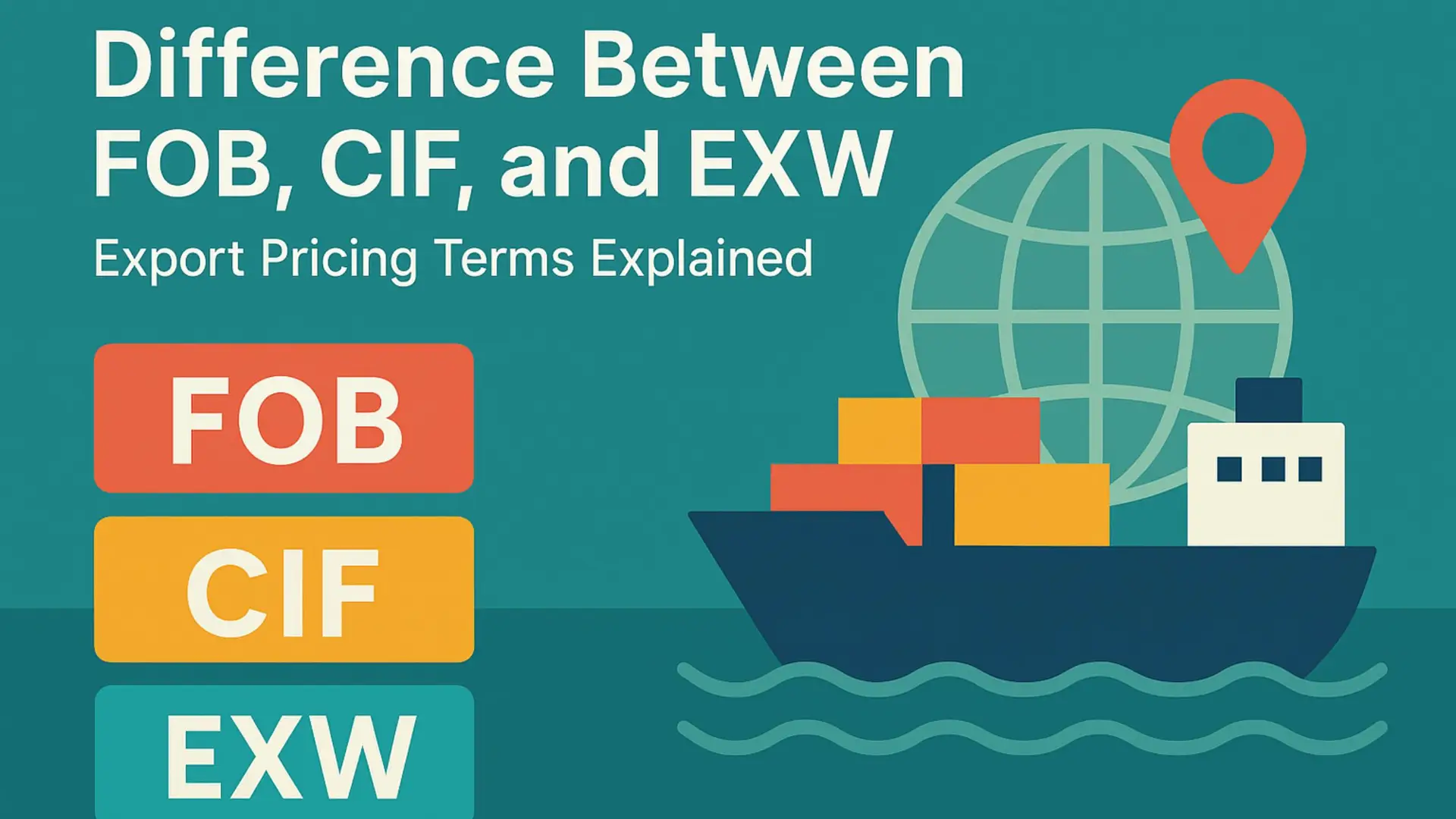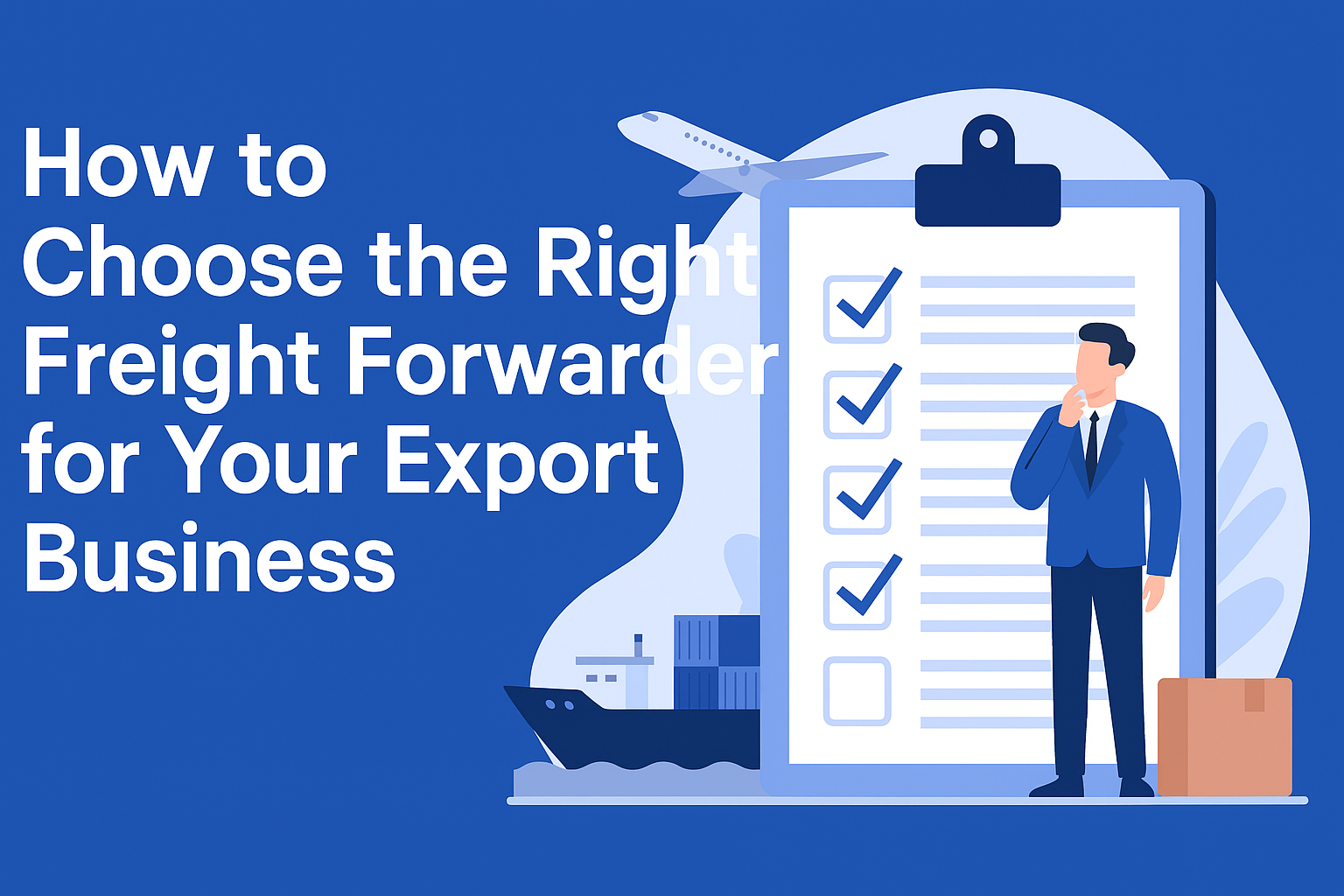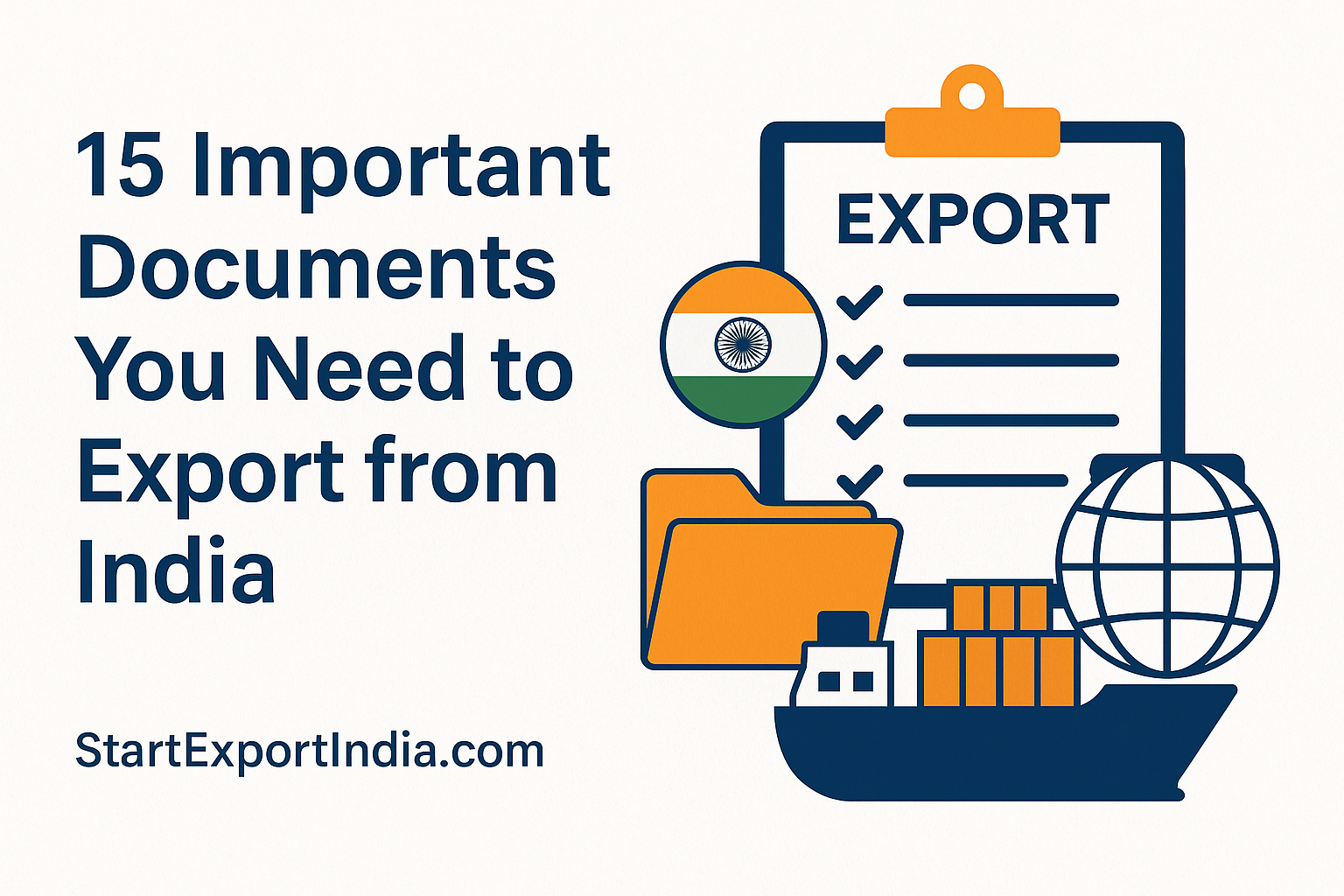Difference Between FOB, CIF, and EXW – Export Pricing Terms Explained
If you’re preparing your export pricing, it’s crucial to understand the difference between FOB, CIF, and EXW. These terms determine:
- Who pays for shipping
- Who takes the risk
- What to include in your quotation
These are part of Incoterms (International Commercial Terms) — globally accepted terms issued by the International Chamber of Commerce (ICC) to standardize trade contracts.
In this blog, we’ll break down FOB, CIF, and EXW in simple language so you never overcommit or undercharge again.
🧾 What Are Incoterms?
Incoterms define the responsibilities of the buyer and seller in an international transaction — including:
- Who pays for freight and insurance
- Who handles export and import clearance
- Where the risk transfers from seller to buyer
Let’s look at the three most common ones: FOB, CIF, and EXW.
📦 What is FOB (Free on Board)?
🔹 Full Form: Free On Board
🔹 Responsibility Ends: When goods are loaded onto the ship at the port of export
🔧 Who handles what?
| Task | Seller | Buyer |
|---|---|---|
| Inland transport in India | ✅ | |
| Export customs clearance | ✅ | |
| Loading onto ship | ✅ | |
| Ocean freight | ✅ | |
| Insurance | ✅ | |
| Import duties & clearance | ✅ |
✅ Best For:
Standard bulk sea shipments. Most Indian exporters quote FOB.
🌊 What is CIF (Cost, Insurance & Freight)?
🔹 Full Form: Cost, Insurance, and Freight
🔹 Responsibility Ends: When goods reach the destination port
🔧 Who handles what?
| Task | Seller | Buyer |
|---|---|---|
| Inland transport in India | ✅ | |
| Export customs clearance | ✅ | |
| Freight to buyer’s port | ✅ | |
| Insurance during transit | ✅ | |
| Import customs clearance | ✅ |
✅ Best For:
When the buyer wants an all-inclusive quote and minimal hassle.
Tip: Add extra buffer in your CIF quote to cover fluctuating freight costs.
🏭 What is EXW (Ex Works)?
🔹 Full Form: Ex Works
🔹 Responsibility Ends: When goods are made available at the seller’s factory or warehouse
🔧 Who handles what?
| Task | Seller | Buyer |
|---|---|---|
| Packing & goods availability | ✅ | |
| Inland transport | ✅ | |
| Export clearance | ✅ | |
| Freight, insurance, clearance | ✅ |
✅ Best For:
Small orders, samples, or deals where buyer arranges everything.
📊 FOB vs CIF vs EXW – Quick Comparison Table
| Term | Seller Pays For | Buyer Takes Over From | Risk Transfers At |
|---|---|---|---|
| EXW | Just packing and goods | Seller’s warehouse | At seller’s door |
| FOB | Up to loading at port | After ship loading | Indian port (onboard) |
| CIF | Up to destination port (incl. insurance) | Unloading & customs at buyer’s port | Destination port |
✅ How to Choose the Right Term
| Scenario | Best Incoterm |
|---|---|
| Buyer wants full control | EXW |
| Exporter offers standard pricing | FOB |
| Buyer wants door-to-port delivery | CIF |
| New exporter seeking simplicity | FOB |
| Buyer pays shipping via own forwarder | EXW or FOB |
🧠 Common Mistakes to Avoid
- Quoting FOB but paying for ocean freight = ❌ Loss
- Not including loading or CHA charges in FOB = ❌ Underquoting
- Forgetting insurance under CIF = ❌ Risky
- Choosing EXW without informing buyer = ❌ Delays in documentation
📌 Conclusion
Choosing the right Incoterm isn’t just technical — it affects your profit, logistics, and buyer relationships.
Start with FOB for most cases. Use CIF if you control freight. Use EXW only for experienced buyers.
👉 Want to master export pricing step-by-step, including Incoterms, margin, freight, and refunds?
📘 Grab our ₹299 beginner-friendly guide:
Start Exporting from India in Just 30 Days



